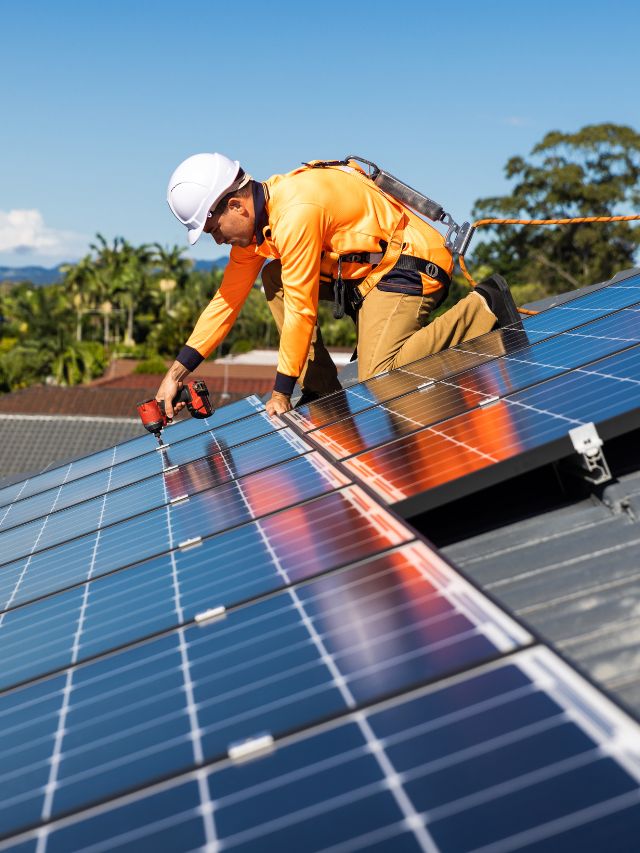From Clouds to Clarity: The Role of AI in Solar Power Forecasting

Solar energy, one of the most abundant renewable energy sources, is transforming the global energy landscape. However, one major challenge has always been its variability, as it depends on factors like weather conditions, cloud cover, and time of day.
Traditionally, solar forecasting methods have relied on statistical models and weather data obtained from satellites and ground-based sensors. These traditional techniques, while useful, often lacked precision, especially in predicting short-term fluctuations, which are critical for grid stability and energy trading.
For instance, traditional methods, such as persistence forecasting (assuming tomorrow’s solar output will mirror today’s), may produce forecasts with a margin of error ranging from 20-50%. This lack of accuracy can lead to inefficiencies, such as overloading the grid or under-utilizing solar energy storage systems.
The growing complexity of integrating solar power into national grids and the increasing adoption of solar installations demand more reliable forecasting methods. This is where AI-powered solar forecasting comes in, pushing the boundaries of what’s possible in terms of accuracy and efficiency.
How AI Helps: The Need for Intelligent Forecasting
How AI Helps: The Need for Intelligent Forecasting
Artificial Intelligence (AI) and machine learning (ML) are transforming solar forecasting by providing more accurate predictions of solar power generation. AI systems can analyze vast amounts of data from multiple sources—including satellite imagery, historical weather patterns, temperature changes, cloud movements, and past solar performance metrics—to provide more reliable and precise forecasts. These AI systems are especially capable of understanding complex patterns that traditional methods cannot detect.
Unlike traditional forecasting tools, AI-driven solutions can adapt and improve over time as they ingest more data. This makes them better at short-term forecasts, which are critical for managing energy grids, optimizing solar farm operations, and ensuring efficient energy trading. AI-based systems are able to reduce prediction errors by up to *30%*, enhancing solar energy reliability and grid stability.
How It Works: AI and Data Integration
AI-powered solar forecasting typically uses machine learning algorithms trained on large datasets that include:
– Historical solar output data: The performance of solar panels over time under varying conditions.
– Weather data: Temperature, humidity, and cloud coverage obtained from satellite and ground stations.
– Real-time satellite imagery: Cloud movement, thickness, and weather disturbances that affect solar radiation.
These systems also leverage techniques such as *deep learning* and *neural networks* that can recognize patterns and make sense of the complex interactions between various factors affecting solar production. For instance, AI can predict how clouds will move and how much sunlight will be blocked, down to specific solar installations. These advanced systems can provide granular forecasts, from a few minutes in advance to days ahead, making them essential tools for grid operators and solar energy companies alike.
Benefits of AI-Powered Solar Forecasting
Benefits of AI-Powered Solar Forecasting
1. Improved Grid Stability: With better forecasts, grid operators can balance supply and demand more effectively, reducing the risk of power outages or the need for backup energy sources, such as fossil fuels.
2. Enhanced Efficiency: Solar farms and rooftop installations can optimize their operations—e.g., scheduling maintenance during low production periods and optimizing energy storage solutions to release power when production is predicted to drop.
3. Energy Trading Optimization: AI allows solar energy companies to predict production fluctuations more accurately, enabling them to buy or sell energy at optimal times in energy markets.
4. Cost Savings: Reducing forecasting errors means minimizing wasted energy and optimizing energy storage systems, which can lead to significant cost reductions for both energy providers and consumers.
5. Increased Renewable Energy Adoption: As AI improves the predictability of solar power, its reliability as a renewable energy source increases, encouraging more investment in solar infrastructure.
Challenges of AI-Powered Solar Forecasting
While AI-powered solar forecasting offers many benefits, it is not without its challenges:
– Data quality and availability: High-quality, real-time data is crucial for AI models to provide accurate forecasts. In regions with limited access to weather stations or satellite imagery, the accuracy of AI forecasts may be compromised.
– High computational requirements: Training AI models involves processing massive datasets, requiring advanced computational infrastructure and significant energy resources, which may not be accessible to all stakeholders.
– Complexity of cloud movement: While AI can forecast cloud cover more accurately than traditional methods, predicting the rapid, localized changes in cloud patterns remains a challenge. These micro-level variations can still impact solar power generation unpredictably.
– Integration with existing systems: Many energy grids and solar operators rely on legacy systems that may not easily integrate with AI-driven forecasting tools, creating hurdles in adoption.
The future of AI-powered solar forecasting looks promising as AI models continue to improve in accuracy, efficiency, and adaptability. With advances in edge computing and 5G technologies, AI-based solar forecasting will be able to provide real-time predictions with minimal latency, improving its integration with energy grids.
Additionally, as AI algorithms become more advanced, they will be able to factor in more nuanced data points, such as aerosol levels or pollution, which can affect solar output. The growing use of IoT devices and smart grids will further enhance the adoption of AI-powered forecasting, ensuring that solar energy becomes an even more reliable and dominant player in the global energy mix.
Real-Life Companies Offering AI-Powered Solar Forecasting
Real-Life Companies Offering AI-Powered Solar Forecasting
1. Google DeepMind: Google uses its AI systems to predict the output from its solar farms, providing accurate forecasts that help optimize energy consumption and reduce costs.
2. Climavision: Climavision specializes in hyper-local weather forecasting and provides AI-driven solar forecasts to improve energy management for solar farms and utilities.
3. SunPower: SunPower integrates AI-powered solar forecasting tools across its installations to improve the performance of its solar energy systems.
4. QOS Energy: This French company offers AI-driven energy forecasting solutions that allow operators of solar farms to better predict energy production and make more informed decisions.
5. AlsoEnergy: A global leader in solar energy management solutions, AlsoEnergy leverages AI-driven forecasting for better performance analytics and operational insights for their solar energy clients.
Real-Life Applications
– India’s Solar Energy Corporation of India (SECI): India is using AI-powered solar forecasting for grid stability as it scales up its renewable energy production. The implementation of AI has been crucial in managing the unpredictable fluctuations of solar energy generation in various regions.
– National Renewable Energy Laboratory (NREL): In the U.S., the NREL has developed a solar forecasting system called WFIP2, which uses machine learning to enhance short-term forecasting for utility-scale solar installations, improving integration into the energy grid.
– Grid operators in Germany: Several grid operators in Germany are leveraging AI solar forecasting tools to integrate solar energy more efficiently into their national grid, reducing their reliance on fossil fuels and improving energy efficiency.
AI-powered solar forecasting represents a groundbreaking advancement in renewable energy technology. By improving the accuracy of solar production forecasts, AI is helping address the long-standing challenge of solar energy variability. From better grid management to more informed energy trading, AI-driven solutions are reshaping how we generate, store, and use solar power.
While challenges remain—such as data quality and computational requirements—the future prospects of AI in solar energy are bright. As more companies adopt this technology and as AI algorithms become even more sophisticated, the world will be able to rely on solar energy with greater confidence, helping transition to a more sustainable energy future.
We need to keep up with all recent innovations to reap maximum benefits and to facilitate a better understanding of the latest developments and trends in the Renewable energy Industry, various Conferences and Expos, which bring Industry leaders together, serve as an all-inclusive platform.
The Energy Evolution Awards, Conference, and Expo organized by Next Business Media is making its debut in Spain in 2025. It will be a leading forum dedicated to honoring excellence in Energy Technology, showcasing innovations, and fostering collaborations. The events unite industry leaders, and visionaries to explore the latest advancements, tackle key challenges, and shape the future of Energy.
The Energy Evolution Awards, Conference, and Expo will celebrate outstanding achievements, promote sustainable practices, and drive the Energy Industry forward into a technologically advanced sustainable era. Energy Evolution Awards, Conference, and Expo will be a platform for cultivating innovation and shaping a brighter, more efficient energy landscape.






